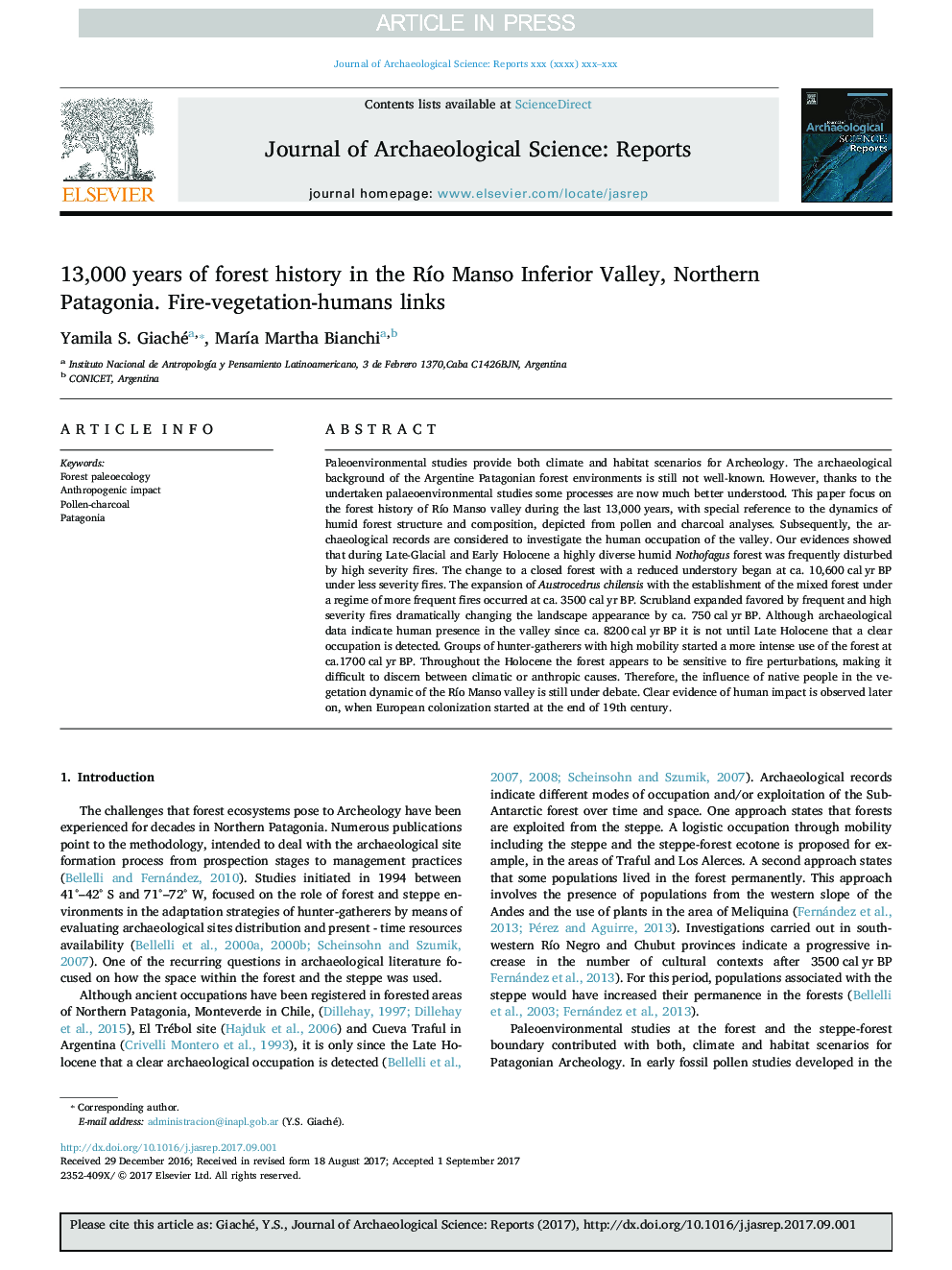| Article ID | Journal | Published Year | Pages | File Type |
|---|---|---|---|---|
| 7444405 | Journal of Archaeological Science: Reports | 2018 | 6 Pages |
Abstract
Paleoenvironmental studies provide both climate and habitat scenarios for Archeology. The archaeological background of the Argentine Patagonian forest environments is still not well-known. However, thanks to the undertaken palaeoenvironmental studies some processes are now much better understood. This paper focus on the forest history of RÃo Manso valley during the last 13,000 years, with special reference to the dynamics of humid forest structure and composition, depicted from pollen and charcoal analyses. Subsequently, the archaeological records are considered to investigate the human occupation of the valley. Our evidences showed that during Late-Glacial and Early Holocene a highly diverse humid Nothofagus forest was frequently disturbed by high severity fires. The change to a closed forest with a reduced understory began at ca. 10,600 cal yr BP under less severity fires. The expansion of Austrocedrus chilensis with the establishment of the mixed forest under a regime of more frequent fires occurred at ca. 3500 cal yr BP. Scrubland expanded favored by frequent and high severity fires dramatically changing the landscape appearance by ca. 750 cal yr BP. Although archaeological data indicate human presence in the valley since ca. 8200 cal yr BP it is not until Late Holocene that a clear occupation is detected. Groups of hunter-gatherers with high mobility started a more intense use of the forest at ca.1700 cal yr BP. Throughout the Holocene the forest appears to be sensitive to fire perturbations, making it difficult to discern between climatic or anthropic causes. Therefore, the influence of native people in the vegetation dynamic of the RÃo Manso valley is still under debate. Clear evidence of human impact is observed later on, when European colonization started at the end of 19th century.
Keywords
Related Topics
Social Sciences and Humanities
Arts and Humanities
History
Authors
Yamila S. Giaché, MarÃa Martha Bianchi,
